Ask any Manly local and they’ll tell you that 15 years ago, there was no marine life in Cabbage Tree Bay. Recreational fishermen had emptied out the waters, almost to the last fish. Dive there today and you’ll find that hard to believe. As soon as you put your head underwater you’ll see large schools of fish. Swim along for a little while and one of the resident blue gropers will soon introduce himself. The marine life here is solid proof that marine reserves work.
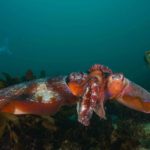

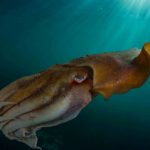
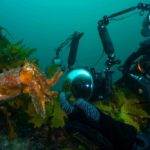
Where is Cabbage Tree Bay?
Cabbage Tree Bay is a stretch of water between Sydney’s famous Manly Beach and Shelly Beach. There are two dive sites here. You can access Fairy Bower via steps on the rocky southern shore that curves around to the left and Shelly Beach from the beach on the right-hand side.
Fifteen years ago, apart from being a pretty place to swim, there wasn’t much to see here. In fact, in 2004, scuba diver and author Michael McFadyen described it thusly:
“The reef does not have much fixed life. There are no sponges, no gorgonians, no sea tulips. In fact, this whole site is somewhat devoid of life. You may see a few small rays and there are sometimes very isolated patches of ladder-finned pomfrets and one-spot pullers, but this is about all. In summary, my view is that this is a bit of a boring dive, worth doing once every five years or so and the occasional night dive.”
Conservation comes to Cabbage Tree Bay
What a difference a decade makes. In 2002, thanks to successful lobbying by a group of concerned residents, the local council agreed to establish a snorkel park. The bay was declared a “no-take reserve,” Sydney’s first (and only). Since then, marine life has flourished.
The reserve has seven main types of habitat: sandy beaches, rocky shores, rocky reefs, kelp, seagrass beds, sandy seabed and open water. Within these, observers have recorded over 160 species of fish and 50 species of marine invertebrates.
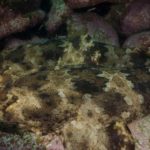
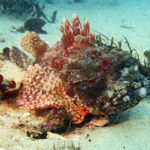
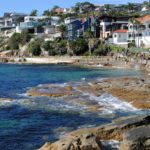
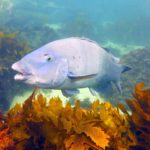
Diving at Cabbage Tree Bay
On the right-hand side of the beach, there are sponge gardens, sea tulips and large kelp gardens alongside the large boulders that line the coast. Look above you and you’ll see large schools of juvenile fish; look below to the sea floor to see stingrays and eagle rays. Port Jackson sharks, scorpionfish, nudibranchs, octopus and wobbegongs hide among the rocks, and weedy seadragons sway with the surge in the kelp gardens.
Swim out from the point a short way across the sandy bottom, and you’ll also find the wreck of a motorbike, a popular first ‘wreck’ for open water students.
On the Fairy Bower side, you’ll also find wobbegongs, sting rays, nudibranchs, octopus, giant cuttlefish and the odd moray eel among the rocks and seaweed. There are schooling fish, clumps of catfish and wrasse of all sizes and colors. If you’re lucky you may even spot a lone grey nurse shark, or a school of cownose rays.
What will you see?
Fish species in the bay range from common temperate species to tropical species that move south on the East Australian Current (EAC). In summer, as the water warms, juvenile dusky whaler sharks, green sea turtles, and smaller tropical fish such as Moorish idols visit the bay. In the winter, giant cuttlefish aggregate to breed. Other species, including the blue groper, cuttlefish and wobbegong sharks inhabit the reserve year-round. Other full-time residents include protected species such as seadragons, elegant wrasse and black rock cod.
Both sites are easy to navigate without any local knowledge. Enter the water either from the steps at Fairy Bower or the beach, turn either left or right, and follow the coastline until you decide to turn around.
It is best to dive early in the morning, mainly to ensure you find somewhere to park. Shelly Beach gets very busy during the day (especially on weekends). The bay is also a great spot for a night dive, being shallow with little to no current (and plenty to see).
Two local dive shops do guided dives here several days a week. If you prefer to go on your own, you can rent gear and air fills from either dive shop as well.
The abundant marine life in Cabbage Tree Bay Marine Reserve should be argument enough that Sydney needs more reserves. But, so far, it’s the only one, making it one of the most popular dive sites in Sydney.
Deborah Dickson-Smith is one half of Diveplanit, a dive travel website she manages with her partner Simon Mallender, based in Australia.
The post Cabbage Tree Bay: Manly’s Marine-Park Miracle appeared first on Scuba Diver Life.
from Scuba Diver Life http://ift.tt/2HYXiFg
No comments:
Post a Comment